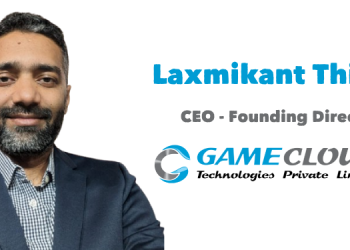The rise of quick commerce (Q-commerce) in India marks a significant shift in how consumers shop for everyday essentials. With its promise of ultra-fast delivery times—often within 10 to 30 minutes—quick commerce platforms have quickly become a key player in the e-commerce and FMCG sectors. Brands and retailers are embracing this trend, driven by the growing demand for speed, convenience, and instant gratification.
The Rise of Quick Commerce in FMCG
Let’s take a moment to appreciate how the ecommerce landscape has evolved in India. I still remember the days when Flipkart was new and you could only buy books from them. This was before Amazon India was a thing, and before there were any major competitors in the market. This was in 2007. Almost 17 years later, and now the ecommerce landscape in India is unrecognizable. The rise of quick commerce (Q-commerce)—platforms offering delivery within 10 to 30 minutes—has reshaped the way Indians shop, especially for groceries and daily essentials. Companies like Blinkit, Zepto, and Swiggy Instamart are now a regular part of urban life, offering unmatched convenience to time-pressed consumers.
Convenience as a Game-Changer
Convenience is what quick commerce is all about. What started out as something to be useful for emergencies has transformed into the preferred way to buy daily necessities. A recent survey revealed that 31% of urban Indians now use Q-commerce for their primary grocery shopping, while 39% use it for regular top-ups. The demand for speed and convenience has made Q-commerce a key driver in FMCG growth, particularly in urban areas. Consumers are choosing instant delivery over bulk buying, and this shift is reshaping the retail landscape.
Adapting to new Consumer Behavior
For FMCG brands, this change is significant. Consumers using quick commerce platforms tend to make smaller, more frequent purchases, which has led brands to rethink their offerings. Larger packs, once the norm, are being replaced with smaller, more convenient sizes that fit the quick-commerce model.
Current State of Quick Commerce
Let’s take a brief look at how quick commerce is disrupting the traditional retail and FMCG sectors.
Market Growth and Key Players
The Q-commerce market in India is currently valued at USD 5 billion and has grown 230% from 2021 to 2023. Major players in this space include Zepto, Blinkit, and Instamart, which dominate the market by utilizing hyperlocal delivery models and strategically located dark stores to meet the demand for ultra-fast delivery. In response, traditional e-commerce giants like Flipkart and BigBasket also entered the fray, shifting towards 10-30 minute delivery windows to compete with Q-commerce platforms.
Q-Commerce’s Impact on FMCG
The quick commerce sector’s rapid expansion has had a profound impact on the FMCG market. More than 18% of consumers are now purchasing food and beverage items through Q-commerce, with over 50% of FMCG sales being driven by Q-commerce platforms. As quick commerce continues to evolve, FMCG companies are optimizing their product assortments for smaller, on-the-go sizes that cater to consumers’ needs for convenience and quick consumption.
Brand Strategies to Leverage Quick Commerce
With the promise of ultra-fast delivery times and a growing consumer demand for convenience, FMCG companies must rethink everything from product offerings to marketing techniques. Here are several key strategies brands can adopt to successfully leverage the quick commerce trend:
Optimizing Product Assortments for Smaller, Frequent Purchases
One of the defining features of quick commerce is the preference for smaller, more frequent purchases. Brands and retailers have been capitalizing this by offering products in smaller, more convenient pack sizes. Adjusting product assortments to meet the needs of Q-commerce shoppers—who prioritize convenience over bulk—can increase the likelihood of purchases and foster greater customer satisfaction.
Developing Strategic Partnerships with Q-Commerce Platforms
Collaborating with leading Q-commerce platforms such as Zepto, Blinkit, and Instamart is becoming a must for FMCG companies. These platforms dominate the market, and establishing strong partnerships can enhance a brand’s visibility and availability. Brands can ensure their products are prominently featured and can benefit from the logistical advantages of Q-commerce, ensuring timely deliveries and customer satisfaction by working directly with the Q-commerce platforms.
Emphasizing Convenience in Marketing Campaigns
Since speed and convenience are at the heart of quick commerce, FMCG brands should tailor their marketing campaigns to emphasize these attributes. Promotional messaging should focus on how their products fit seamlessly into the fast-paced, on-the-go lifestyle of the modern consumer. Highlighting fast delivery times, instant gratification, and ease of purchase will resonate with the growing number of consumers who turn to Q-commerce for everyday essentials.
Adapting to Dynamic Pricing and Promotions
Quick commerce is a competitive space where dynamic pricing and frequent promotions are essential. Brands should leverage data from Q-commerce platforms to adjust their pricing strategies in real time. Offering time-limited discounts, bundled offers, or flash sales can capture the attention of impulse shoppers, encouraging immediate purchases and driving higher sales volumes.
The Future of Quick Commerce
The future of Q-commerce in India looks promising, with rapid growth expected to continue as consumer demand for convenience increases. Driven by factors like faster delivery, smaller purchase sizes, and urban-centric lifestyles, Q-commerce is set to reshape the retail landscape, especially in the FMCG sector.
Continued Growth and Market Expansion
The quick commerce sector is expected to account for over 60% of online FMCG sales in the near future. As consumer preferences shift toward fast, flexible shopping, the market for Q-commerce is projected to reach almost USD 10 billion in India by 2029.
Increased Investment in Technology and Infrastructure
To sustain growth, Q-commerce platforms will continue investing in technology, including AI, machine learning, and advanced logistics. Innovations in last-mile delivery, dark stores, and micro-fulfillment centers will help companies meet the growing demand for instant deliveries, reducing operational costs and improving efficiency.
Competition with Traditional Retail Models
As Q-commerce grows, traditional retail models will be forced to adapt. E-commerce giants like Amazon and Flipkart are already entering the quick commerce space, and traditional grocery platforms like BigBasket are pivoting to faster delivery models. This shift will intensify competition in the FMCG space, pushing brands to innovate and offer more personalized shopping experiences.
Impact on Small Retailers and Distributors
The rapid rise of Q-commerce has sparked concerns among small retailers and distributors, with many feeling sidelined by the growing power of these platforms. An estimated 25% neighborhood stores might close by 2030 due to the impact of Q-commerce platforms. The potential disruption to the traditional retail and FMCG distribution network could lead to calls for regulatory scrutiny, especially regarding compliance with foreign direct investment (FDI) norms and fair business practices.
Concluding Thoughts
The future of Q-commerce in India is looking bright. With rapid growth driven by evolving consumer preferences for speed and convenience, quick commerce is poised to reshape the landscape of FMCG and e-commerce. It also presents challenges, particularly for traditional retailers and distributors. The need for regulatory scrutiny and fair business practices will become more pressing as the sector expands, ensuring that the growth of Q-commerce benefits all players in the ecosystem. As the sector matures, it will continue to redefine how products are delivered and consumed in India.

















